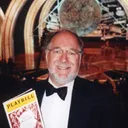Stay in the Loop
BSR publishes on a weekly schedule, with an email newsletter every Wednesday and Thursday morning. There’s no paywall, and subscribing is always free.
Eva Perón upstaged
‘Evita’ at the Academy of Music
Evita is Andrew Lloyd Webber’s finest accomplishment. Its story is original (not based on a play or a book), the script is pointed, and the Latin-inflected music exudes a simmering mix of energy and melody. The essence is serious — even tragic — yet the lyrics are witty.
Its title character seduces you even though she’s an aggressive slut who claws and screws her way to the top — much like Shakespeare’s Richard III or Lady Macbeth. And Evita’s powerful presence is balanced by the skeptical Ché, who serves as the play’s narrator and Greek chorus, in effect battling Evita for control of our emotions.
In the original 1978 version in London, the exciting Elaine Paige battled to a draw with her challenger, played by David Essex. On Broadway in 1979, Patti LuPone fought like a banshee in an evenly matched struggle with Mandy Patinkin as Ché. In the 2012 Broadway revival (which ran for just nine months), the Argentinean Elena Roger was widely criticized for being “shrill” and “weak,” allowing Evita to be dominated on stage by Ricky Martin as Ché. The players are different in the recent touring production of the show, but that odd and disconcerting balance remains. In the face of a superb male cast, Caroline Bowman as Eva Perón was a letdown.
Best Che ever
Bowman’s voice on opening night was edgy, throbbing with vibrato on her top notes and hollow on her low notes. Her enunciation was so poor that many of Tim Rice’s delicious lyrics, such as "That's what they call me/so Lauren Bacall me," were not projected and sometimes were not even audible. Compounding Bowman’s problems was a strange accent (she pronounced “not” as “nawt”) that was as false to Buenos Aires as to Broadway.
In Bowman’s defense, Evita is a bitch of a part, and I don’t refer only to the character’s personality. Its vocal range requires pyrotechnic descents from soprano into chest voice, sensuous dancing, and serious acting. Yet for the right woman — LuPone and her Broadway successor Loni Ackerman, for example — the Evita role can be a magnificent showcase.
Josh Young, on the other hand, was spectacular — the best Ché I’ve seen since Patinkin, mocking the Peróns with a rich voice, precise articulation, and charismatic presence. In the original version, director Harold Prince insisted that the character should suggest Che Guevara, who was Argentinean by birth. Accordingly, Patinkin was clothed in army fatigues like the revolutionary Guevara. In the 1996 film of Evita, the character became an anonymous peasant worker, as he appears here.
Sean MacLaughlin as the general-turned-dictator Juan Perón projected strongly even when whispering. And when he raised his voice, it had clarion brilliance. Christopher Johnstone, as the tango singer whom Evita discards after he’s served his purpose, was suave and sympathetic with an attractive voice.
A few suggestions
The whole production had to grapple with a change wrought by time. Economics necessitated a much smaller cast and orchestra. Instead of mobs on stage, we saw projected historic film and 18 people crisscrossing rapidly in an attempt to simulate crowds. The much-reduced pit band had only four string players and two brass while percussion and electronics predominated. On the plus side, Rob Ashford’s choreography added tango and paso-doble flavor.
Up-tempo, catchy songs like “Buenos Aires,” “Oh What a Circus,” “High Flying Adored,” and “Rainbow High” (“They need to adore me/So Christian Dior me”) lacked sizzle because they were staged poorly.
Because four decades have elapsed since the 1970s, many in the audience don’t know the Peróns’ dark history. The show skips quickly from one event to another with inadequate exposition. It would be helpful to add lucid transitions through stage business, but little was attempted. A scene that propels the plot and marks a turnaround in Evita’s fortunes, “The Rainbow Tour,” lacked specificity, and it was hard to follow what happened when Eva visited Europe.
The show ends with Eva’s death from cancer at age 33, and this production adds a reincarnation of her standing on the balcony where earlier she had sung, “Don’t Cry For Me Argentina.”
In the case of Evita, truth may be stranger than fiction: After Evita’s death in 1952, Juan Perón was thrown out of the country by a military coup, and Evita’s embalmed corpse was removed from public view by the new dictatorship. Nineteen years later, it was exhumed and flown to Madrid, where Perón and his third wife, Isabel, kept the body on a platform next to their dining room table. Perón came out of exile in 1973 and was re-elected president of Argentina. He died the following year, and Isabel became the first female president — the dream that was denied to Evita.
What, When, Where
Evita. Music by Andrew Lloyd Webber; lyrics by Tim Rice; Michael Grandage directed. June 17-22, 2014 at the Academy of Music, Broad and Locust Sts., Philadelphia. 215-731-3333 or www.kimmelcenter.org/broadway.
Sign up for our newsletter
All of the week's new articles, all in one place. Sign up for the free weekly BSR newsletters, and don't miss a conversation.
 Steve Cohen
Steve Cohen